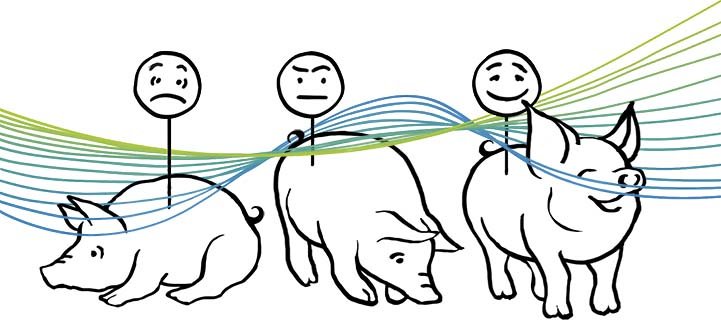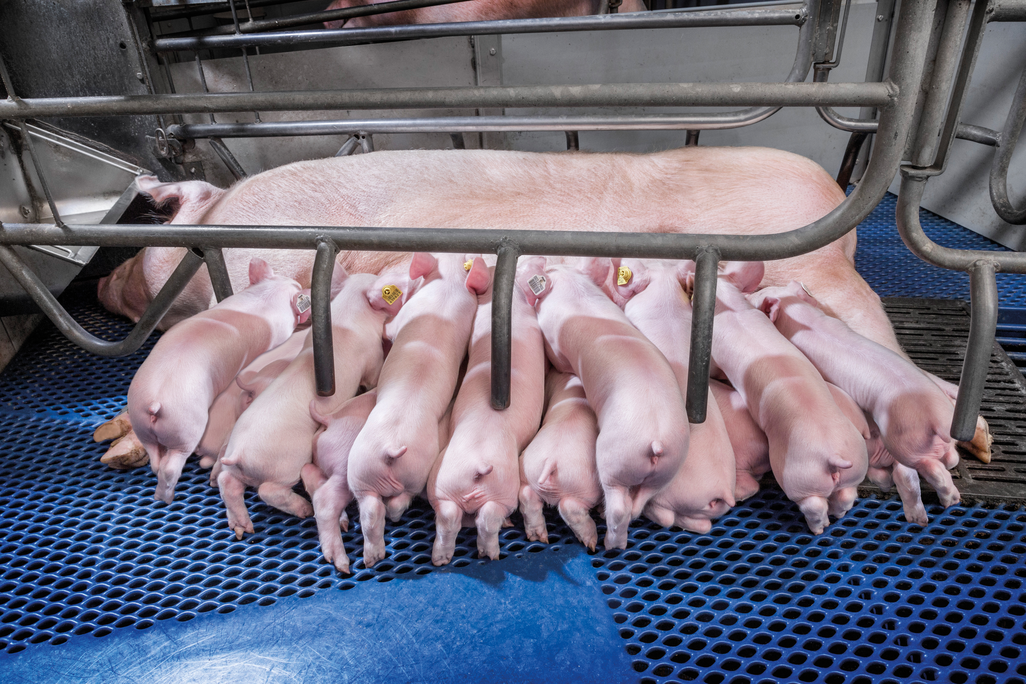
Published on Feb. 1, 2022
The sow with social skills
Perhaps it seems a bit silly to talk about a farm animal and their ability to ‘play nice’, but in current swine production, these kinds of questions are being asked more often. Farms are getting larger and skilled labor is becoming an exception to the rule – so these large groups of pigs need to get better at playing without a referee. How can Hypor, the swine brand of Hendrix Genetics, select females that are better equipped with the social skills for a happy life?
We want our pigs to have a happy, healthy and productive life. It all starts with a sow who is not only sociable and a good mother but is also able to produce high quality piglets that grow up to be full value finishers. When you breed for balance, there is no need for extremes, we can all reap the benefits.
What are social skills?
So, what constitutes ‘social skills’ in a sow? One must consider the interactions a sow is faced with during her life, not only with contemporaries, but also with farm workers. Different social behaviors have evolved in animals because these behaviors have helped them survive or reproduce historically. Having positive social interactions with other animals or people attributes to being more sociable.
When breeding sows with enhanced social skills, we are able to eliminate extra stress on the animals and producers during all stages of production. Social sows are easier to handle and show their maximum potential. Are adaptive and work together for the good of the group, not in competition with each other.
Benefits to contemporaries, offspring and farm workers
A sow with social skills is easily able to cope with different social situations without becoming too stressed, or negatively impacting her behavior. For the farm workers, a more sociable sow is easy to handle and manage throughout production, so she is relaxed and easy going. This is in the middle ground of fight or flight response. This calm disposition is a labor saver when you consider the time needed to move, interact with, and care for the sows.
Social skills between pigs are also critical and perhaps more natural. For her contemporaries (other sows), a sociable sow easily adapts to the hierarchy structure in group housing and interacts with others in a meaningful way (not picking fights, but actually making friends ‘on the playground’).
Another consideration for a sow with social skills is how she interacts with her offspring after farrowing, or her mothering ability. This skill starts from farrowing and continues to weaning. It begins with the sow’s desire to build a nest, which is associated with lower stillborn piglets, starved piglets, or laid on piglets. Next, the sow’s ability to farrow easily, without intervention, and to stay in the lying position until farrowing is complete, is important for her piglets to be born safely and consume enough colostrum.
From farrowing to weaning, sows that are more vocal or communicative during active time (e.g. when standing up or eating), this results in less pre-weaning mortality (e.g. from being laid on). Our sow with social skills has exceptional mothering ability from farrow to weaning, easily farrowing and caring for her piglets.
How can we breed for a more sociable sow?
It’s important to discover what it means to have a more sociable sow, but also to find ways to achieve this and even improve upon it. Behavioral measurements can be difficult to obtain and sometimes subjective, so perhaps it is worthy to investigate traits that are easy to measure but will also indirectly improve the social skills of the sow. For example, with gestating sows, we currently house all dam line nucleus level gestating sows in loose pens. This indirectly selects for sows with social skills, but also sows with exceptional feet, legs, and body structure. Sows in loose housing must also become accustomed to farm workers in their ‘personal space’ when housed loose and in groups, again indirectly selecting for animals with better behavior towards humans.
Finally, by including traits such as percentage of piglets born alive or percentage of piglets weaned, there is indirect selection for better mothering ability. Sows with high percentage of piglets born alive will have fewer stillborn piglets and likely an easier farrowing process. For sows with a high percentage of piglets weaned, they are likely better at communicating their activity to their piglets, while also producing sufficient quantity and quality of colostrum and mature milk.
Breeding a sow with social skills provides many benefits. Farm workers will be happy, the other sows on the playground will be happy, and she will be a great mother to many piglets. We believe that selecting healthy, easy to manage animals we will lead to better welfare, less waste, and minimized labor for farm workers.

You've read a solution article. Interested in the opportunity or challenge?
Do you want to explore all articles?
